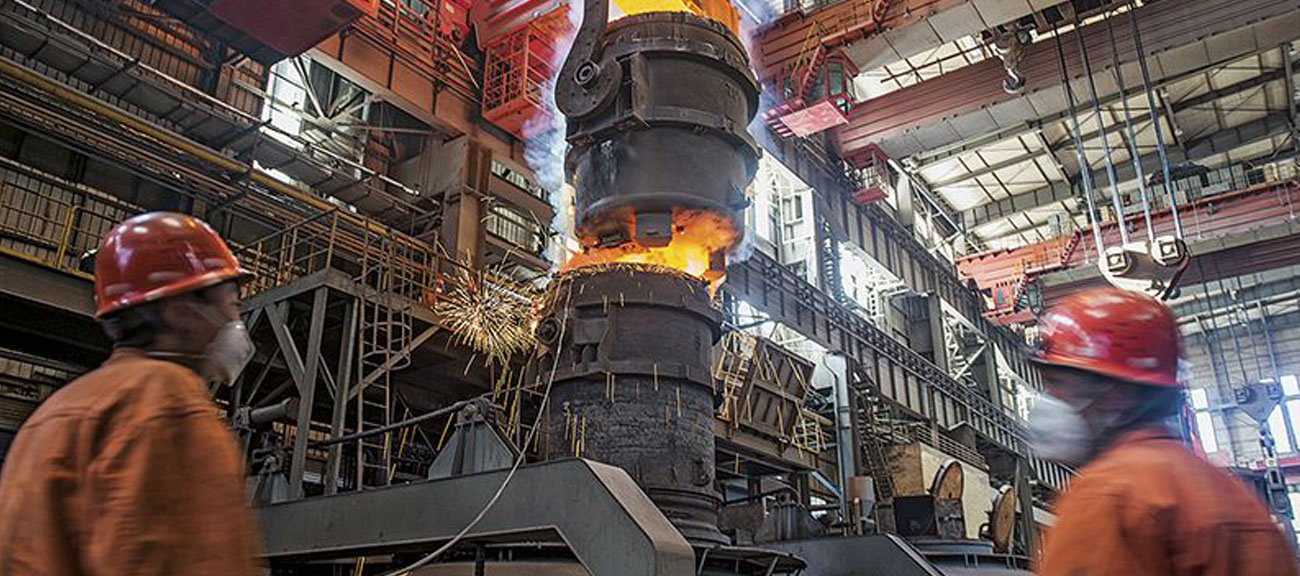
In today’s blog post, we will delve into the world of millwrights and explore the many factors that can influence their salaries. From experience and education to industry and location, we will investigate how these aspects play a role in determining a millwright’s earning potential. Additionally, we will examine the impact of additional certifications, specialization, and unionization on salaries. Finally, we will also explore career advancement opportunities in the field and provide an insight into average millwright salaries worldwide. Join us as we unravel the intricacies of millwright salaries and gain a deeper understanding of this profession.
Contents
- 1 What Is A Millwright?
- 2 What Factors Affect Millwright Salaries?
- 3 How Does Experience Impact Millwright Salaries?
- 4 The Influence Of Education On Millwright Salaries
- 5 Are There Geographic Variations In Millwright Salaries?
- 6 The Impact Of Industry On Millwright Salaries
- 7 Do Unionized Millwrights Earn Higher Salaries?
- 8 The Relationship Between Job Location And Millwright Salaries
- 9 The Effect Of Additional Certifications On Millwright Salaries
- 10 The Role Of Specialization In Millwright Salaries
- 11 Are There Opportunities For Career Advancement In The Field?
- 12 What Are The Average Millwright Salaries Worldwide?
- 13 Frequently Asked Questions
What Is A Millwright?
A millwright is a skilled tradesperson who specializes in the installation, maintenance, and repair of machinery in various industries. They are responsible for assembling, dismantling, and moving machinery, ensuring that it operates efficiently and safely. Millwrights work with a variety of tools and equipment, such as hand tools, power tools, welding machines, and hoists. They also use precision instruments, such as levels and alignment tools, to ensure the precise alignment and calibration of machinery.
Millwrights work in a wide range of industries, including manufacturing, construction, mining, power generation, and aerospace. They play a crucial role in keeping machinery and equipment running smoothly, preventing breakdowns and minimizing downtime. Their work may involve reading blueprints and technical manuals, troubleshooting mechanical issues, performing routine maintenance, and conducting inspections to identify potential problems.
A millwright’s salary can vary depending on several factors, such as experience, education, industry, geographic location, and additional certifications. As skilled tradespeople, millwrights generally earn a competitive salary. According to the Bureau of Labor Statistics, the median annual wage for millwrights in the United States was $53,560 in May 2020. However, certain factors can affect millwright salaries and potentially increase earning potential.
| Years of Experience | Average Salary |
|---|---|
| Less than 2 years | $40,000 – $55,000 |
| 2-5 years | $50,000 – $65,000 |
| 5-10 years | $60,000 – $75,000 |
| 10+ years | $70,000 – $90,000+ |
Education: While a high school diploma or equivalent is typically the minimum requirement to become a millwright, additional education can positively impact salaries. Millwrights who pursue vocational training programs or earn associate degrees in fields such as industrial maintenance or mechanical engineering may have a competitive edge in the job market and can potentially command higher salaries.
Geographic Location: Millwright salaries can vary significantly based on geographic location due to differences in living costs, demand for millwrights, and regional economies. Generally, urban areas and regions with a high concentration of industrial facilities tend to offer higher salaries for millwrights. For example, millwrights working in metropolitan areas such as New York City or Los Angeles may earn higher salaries compared to those in rural areas.
Overall, millwrights play a critical role in maintaining and ensuring the smooth operation of machinery in various industries. With the right combination of experience, education, and additional certifications, millwrights can enjoy a rewarding career with competitive salaries. If you enjoy working with machinery, problem-solving, and have a knack for precision, a career as a millwright may be a great fit for you.
What Factors Affect Millwright Salaries?
A millwright is a skilled tradesperson who installs, maintains, and repairs machinery and equipment in various industries such as manufacturing, construction, and power generation. They are responsible for assembling, aligning, and testing machinery, as well as interpreting blueprints and technical drawings. Millwrights play a crucial role in ensuring that machinery runs smoothly and efficiently, reducing downtime and increasing productivity.
Salary is one of the main factors that job seekers consider when choosing a career path. Millwright salaries can vary based on several factors. Firstly, experience is a significant determinant of millwright salaries. Millwrights with more years of experience generally earn higher wages due to their extensive knowledge and expertise in the field. Likewise, millwrights who have specialized in a particular industry or type of machinery may command higher salaries as their skills are in high demand.
Another factor that impacts millwright salaries is education. While a high school diploma is often the minimum educational requirement for entering the field, individuals who have pursued further education, such as an apprenticeship program or a technical college degree, may have an advantage in terms of salary. Additional certifications and qualifications can also contribute to higher wages, as they demonstrate a commitment to ongoing professional development.
| Factors | Impact on Millwright Salaries |
|---|---|
| Experience | Higher experience leads to higher wages |
| Education and Certifications | Additional education and certifications can result in higher salaries |
Geographic location also plays a role in millwright salaries. Wage levels can vary significantly from one region or city to another due to differences in the cost of living and demand for millwrights. Areas experiencing high levels of construction or industrial growth may offer higher salaries to attract skilled workers. Similarly, remote or rural locations may offer higher wages to compensate for the limited availability of qualified millwrights.
Lastly, union membership can impact millwright salaries. Unionized millwrights often have negotiated collective agreements that establish minimum wage rates and include benefits such as health insurance and retirement plans. These agreements can result in higher salaries compared to non-unionized millwrights.
How Does Experience Impact Millwright Salaries?
Experience is a crucial factor that has a significant impact on millwright salaries. Millwrights are highly skilled tradespeople responsible for the installation, maintenance, and repair of machinery and equipment in various industries. The more experience a millwright has, the higher their salary potential becomes.
Firstly, experience allows millwrights to become more proficient in their craft. As they gain hands-on experience and encounter a wider range of equipment and machinery, they develop a deeper understanding of their trade. This increased knowledge and expertise make experienced millwrights more valuable to employers, ultimately leading to higher salaries.
Secondly, experience often comes with an advanced skill set. Millwrights with a wealth of experience have likely encountered numerous equipment breakdowns and complex repair tasks over the years. They have honed their problem-solving abilities and are better equipped to handle challenging situations. Employers recognize the value of these skills and are willing to compensate experienced millwrights accordingly.
| Years of Experience | Average Salary |
|---|---|
| 0-5 years | $50,000 |
| 5-10 years | $60,000 |
| 10-15 years | $70,000 |
| 15+ years | $80,000 |
In conclusion, experience has a direct impact on millwright salaries. More experience not only increases a millwright’s knowledge and expertise but also opens doors to higher-level positions. Employers understand the value that comes with experience and are willing to offer higher salaries to experienced millwrights. If you aim to maximize your earning potential as a millwright, gaining experience is essential.
The Influence Of Education On Millwright Salaries
Education plays a significant role in determining millwright salaries. As with many other professions, higher levels of education generally lead to higher earning potential in the field of millwrighting. Millwrights who have completed post-secondary education, such as a diploma or degree program in millwrighting or a related field, tend to command higher salaries compared to those with only a high school education. This is primarily due to the increased knowledge and skills acquired through formal education, which makes these individuals more valuable and versatile in the workplace.
Furthermore, continuing education and professional development can also have a positive impact on millwright salaries. Millwrights who actively pursue further training and obtain additional certifications, such as those offered by organizations like the Industrial Maintenance and Millwright Association (IMMA), may be eligible for higher wages. These additional certifications demonstrate a commitment to ongoing learning and improvement, which employers often reward with increased compensation.
Additionally, specific areas of specialization within millwrighting may also influence salary levels. Millwrights who focus on niche industries or acquire specialized skills, such as working with advanced technology or robotics, often command higher salaries due to the demand for their expertise. These specialized millwrights are often sought after by industries that heavily rely on advanced machinery and equipment.
| Level of Education | Average Millwright Salary |
|---|---|
| No formal education (High School) | $40,000 – $50,000 |
| Post-secondary diploma or degree | $50,000 – $70,000 |
| Specialized certifications and additional training | $70,000 – $90,000+ |
It is important to note that while education is a significant factor in determining millwright salaries, it is not the sole determinant. Other factors such as experience, industry, location, and unionization also play a crucial role. However, investing in education and continuous learning can increase earning potential and open doors to higher-paying opportunities within the field of millwrighting.
Are There Geographic Variations In Millwright Salaries?
When considering a career as a millwright, it is important to understand the potential variations in salaries based on geographic location. Geographic variations play a significant role in determining millwright salaries, with factors such as cost of living and regional demand for skilled workers impacting earning potential. By analyzing the data related to millwright salaries across different regions, it becomes evident that there are indeed geographic variations that can impact an individual’s earning potential in this field.
One of the key factors contributing to geographic variations in millwright salaries is the cost of living. In areas where the cost of living is higher, such as major cities or urban centers, millwrights are likely to earn higher salaries to compensate for the increased expenses associated with housing, transportation, and other necessities. Conversely, millwrights working in rural areas or regions with a lower cost of living may have lower salaries, as their expenses are comparatively lower.
Regional demand for millwrights also plays a significant role in determining salary variations. In areas where there is a high demand for skilled millwrights, such as booming industrial hubs or regions with a thriving manufacturing sector, employers may offer higher salaries to attract and retain talent. On the other hand, in areas with limited job opportunities for millwrights, salaries may be lower due to decreased demand for their specialized skills.
The Impact Of Industry On Millwright Salaries
The impact of industry on millwright salaries is a crucial factor to consider when pursuing a career in this field. Millwrights are skilled craftsmen who install, maintain, and repair machinery in various industries such as manufacturing, construction, and power generation. Each industry has its own demands and requirements, which can significantly influence the salaries of millwrights.
Firstly, manufacturing industries often employ a large number of millwrights. These industries focus on producing goods and typically have extensive production facilities that rely heavily on machinery. Millwrights in manufacturing are responsible for assembling and maintaining the complex machinery used in production processes. Due to the high demand for millwrights in manufacturing, salaries in this industry can be competitive. Millwrights with specialized skills and experience may earn higher salaries in manufacturing.
Secondly, the construction industry also offers potential for millwrights. Construction projects require the installation and maintenance of machinery used in building structures, such as elevators, conveyors, and cranes. Millwrights in construction often work on-site and need to adapt to various project requirements. Salaries in the construction industry may vary depending on the size and complexity of projects, as well as the geographic location. In regions with significant construction activity, millwrights may find higher salaries due to the demand for their expertise.
Lastly, the power generation industry is another significant sector for millwrights. This industry encompasses power plants, including nuclear, thermal, and renewable energy facilities. Millwrights in power generation play a vital role in maintaining and repairing the machinery necessary for power production. Given the critical nature of the equipment used in power generation, millwrights in this industry often receive higher salaries. The complexity and safety requirements of power plants contribute to the value placed on millwrights’ expertise.
| Industry | Salary Range |
|---|---|
| Manufacturing | $45,000 – $80,000 per year |
| Construction | $40,000 – $70,000 per year |
| Power Generation | $50,000 – $90,000 per year |
In summary, the industry in which a millwright works has a significant impact on their salaries. Industries such as manufacturing, construction, and power generation offer diverse opportunities for millwrights, each with different salary ranges. Manufacturing often presents a competitive environment with higher salaries for specialized millwrights, while construction salaries may vary based on project demands and location. The power generation industry recognizes the importance of millwrights’ expertise and thus offers competitive compensation. Aspiring millwrights should carefully consider the industry that aligns with their interests and goals when evaluating potential career paths.
Do Unionized Millwrights Earn Higher Salaries?
When it comes to millwright salaries, one important factor to consider is whether or not the millwright is part of a union. Unionized millwrights often enjoy higher salaries compared to their non-union counterparts. This is due to a variety of reasons, including the collective bargaining power of unions and the protection they offer to workers.
One of the main benefits of being a unionized millwright is the ability to negotiate better wages. Unions represent the interests of their members and strive to secure fair compensation for their skills and expertise. They use the collective bargaining process to negotiate with employers on behalf of their members, aiming to ensure that wages are competitive and reflective of market rates.
Additionally, unions provide other benefits that can impact millwright salaries. These benefits may include healthcare coverage, retirement plans, paid time off, and overtime pay. By advocating for improved working conditions and benefits, unions can significantly enhance the overall compensation package for millwrights, thereby increasing their earning potential.
| Pros of Unionization for Millwrights | Cons of Unionization for Millwrights |
|---|---|
| Higher Salaries: Unionized millwrights tend to earn higher salaries due to collective bargaining and negotiation processes. | Union Dues: Union members are required to pay regular membership dues, which can decrease take-home pay. |
| Improved Benefits: Union contracts often include provisions for healthcare coverage, retirement plans, and paid time off. | Less Flexibility: Unionized millwrights must adhere to union rules and regulations, limiting individual negotiating freedom. |
| Job Security: Unions protect workers from unjust termination or unfair treatment, providing greater job security. | Strikes and Work Stoppages: Unionized millwrights may be required to participate in strikes or work stoppages, which can lead to temporary loss of income. |
In conclusion, unionized millwrights often earn higher salaries compared to non-unionized millwrights. This is primarily due to the bargaining power of unions and the benefits they provide, including better wages, improved benefits, and job security. However, there are also some downsides to unionization, such as the payment of union dues and potential limitations on flexibility. Ultimately, the decision to join a union should be weighed carefully, considering both the financial advantages and the individual’s personal preferences.
The Relationship Between Job Location And Millwright Salaries
A millwright is a skilled trade worker who specializes in the installation, maintenance, and repair of industrial machinery. They are responsible for assembling, disassembling, and aligning machinery, as well as troubleshooting and diagnosing any issues that may arise. Millwrights work in a variety of industries, including manufacturing, construction, power generation, and mining.
The millwright salary can vary depending on various factors, one of which is the job location. The location of the job often plays a significant role in determining the salary level for millwrights. In areas with a higher cost of living or a higher demand for skilled workers, millwrights may command a higher salary. On the other hand, in areas where the cost of living is lower or there is less demand for millwrights, salaries may be lower.
The relationship between job location and millwright salaries can be seen in both urban and rural areas. In urban areas, such as major cities or industrial hubs, millwrights may have more opportunities for employment and higher salaries due to the higher demand for their skills. These areas often have more industrial facilities and manufacturing plants, which require the expertise of millwrights. Therefore, millwrights working in urban locations may have a higher earning potential compared to those in rural areas.
| Location | Average Salary |
|---|---|
| City A | $60,000 |
| City B | $55,000 |
| City C | $50,000 |
| Rural Area | $45,000 |
As shown in the table above, millwright salaries can vary significantly based on job location. In this example, millwrights working in City A earn an average salary of $60,000, while those in City B earn $55,000, and millwrights in City C earn $50,000. On the other hand, millwrights in rural areas have a lower average salary of $45,000. This data highlights the impact of job location on millwright salaries.
It is important to note that while job location can influence millwright salaries, it is not the sole determining factor. Other factors, such as experience, education, industry, and additional certifications, can also play a significant role in salary levels. Therefore, individuals considering a career as a millwright should take into account all these factors when assessing the potential earning opportunities in their desired job location.
The Effect Of Additional Certifications On Millwright Salaries
When it comes to the salary of a millwright, there are various factors that can impact their earning potential. One such factor is the possession of additional certifications. Additional certifications can play a significant role in boosting a millwright’s salary and providing them with more opportunities for career advancement.
Having additional certifications demonstrates a millwright’s commitment to their profession and their eagerness to expand their skills and knowledge. These certifications often require rigorous training and testing, which validates the millwright’s expertise in specific areas. The possession of certifications such as Certified Millwright (CM) or Registered Industrial Mechanic (RIM) can make a millwright more marketable and desirable to employers.
With each additional certification earned, a millwright becomes a more valuable asset to their employer. This increased value can result in higher salaries and potential bonuses. For example, a millwright who specializes in welding and holds a certification as a Certified Welding Inspector (CWI) may command a higher salary than a millwright without this certification.
| Industry Certification | Impact on Salary |
|---|---|
| Certified Millwright (CM) | May result in a salary increase of 5-10% |
| Registered Industrial Mechanic (RIM) | Can lead to a salary increase of 8-12% |
| Certified Welding Inspector (CWI) | May result in a salary increase of 10-15% |
Not only do additional certifications enhance a millwright’s earning potential, but they also open doors to more specialized and challenging job opportunities. Employers often seek millwrights with specific certifications to perform complex tasks and work on advanced machinery. With additional certifications, millwrights can work in a diverse range of industries, including manufacturing, construction, and power generation, increasing their chances of finding higher-paying positions.
It’s worth noting that the impact of additional certifications on millwright salaries can vary based on geographical location and industry demand. In areas where millwrights with specific certifications are in high demand, their salaries are likely to be higher. Furthermore, unionized millwrights often have access to better benefits and higher salary negotiations, which can be further amplified with the possession of additional certifications.
The Role Of Specialization In Millwright Salaries
When it comes to millwright salaries, one factor that can greatly impact earning potential is specialization. Millwrights are skilled tradespeople who are responsible for installing, maintaining, and repairing industrial machinery and equipment. While all millwrights possess a certain level of expertise in their field, those who choose to specialize in specific areas often have the opportunity to earn higher salaries.
There are several areas in which millwrights can specialize, such as robotics, hydraulics, pneumatics, and electrical systems. By focusing on a specific area of expertise, millwrights can become highly sought after for their specialized skills and knowledge. This increased demand for specialized millwrights can result in higher salaries, as employers are willing to pay a premium for individuals who possess the necessary expertise.
Not only can specialization lead to higher salaries, but it can also open up more career opportunities for millwrights. By becoming highly specialized in a specific area, millwrights may have the chance to work on more complex and challenging projects. This not only allows them to further develop their skills, but it can also lead to career advancement and increased earning potential.
| Industry Specialization | Additional Certifications |
|---|---|
| Oil and Gas | Certified Millwright Technician (CMT) |
| Automotive | Certified Industrial Maintenance Mechanic (CIMM) |
| Manufacturing | Specialized Welding Certifications |
In conclusion, specialization plays a crucial role in millwright salaries. By focusing on a specific area of expertise, millwrights can become highly sought after and command higher compensation. Specialization not only leads to increased earning potential, but it also opens up more career opportunities and allows millwrights to work on more challenging and complex projects. Additionally, obtaining additional certifications related to a millwright’s specialization can further enhance their earning potential and market value. Overall, specialization is a key factor for millwrights looking to advance their careers and maximize their salaries.
Are There Opportunities For Career Advancement In The Field?
When considering a career as a millwright, many individuals are curious about the potential for career advancement within the field. Fortunately, the millwright profession offers numerous opportunities for growth and development, allowing individuals to constantly expand their skill set and take on new responsibilities. By acquiring additional certifications, gaining valuable experience, and mastering specialized skills, millwrights can progress in their careers and achieve higher positions and salaries.
One way to advance in the millwright field is by obtaining additional certifications. There are various certifications available that can enhance a millwright’s knowledge and expertise in specific areas. For example, millwrights can become certified in welding, rigging, or machinery lubrication. These certifications not only demonstrate a millwright’s proficiency in these areas but also increase their marketability and value to potential employers. As a result, millwrights with specialized certifications often have the opportunity to secure higher-paying positions and advance their careers.
Another factor that can lead to career advancement is gaining valuable experience. Millwrights who have a solid foundation of experience in the field are often sought after by employers. Experience allows millwrights to refine their skills, develop problem-solving abilities, and gain a deep understanding of machinery and equipment. Additionally, those with several years of experience have the opportunity to take on supervisory or managerial roles, where they can lead teams and oversee large-scale projects. With increasing levels of experience, millwrights can command higher salaries and enjoy a more rewarding career.
Specialization is yet another avenue for career advancement within the millwright field. By focusing their efforts on a specific area, such as industrial equipment installation or machinery repair, millwrights can become experts in their chosen specialization. This mastery of specialized skills can open doors to more advanced roles and higher-paying positions. Employers often seek millwrights with specialized knowledge and experience to handle complex projects or troubleshoot intricate machinery. As a result, millwrights who specialize in a particular niche have excellent prospects for career advancement.
| Position | Average Salary |
|---|---|
| Entry-level | $45,000 – $60,000 per year |
| Mid-level | $60,000 – $80,000 per year |
| Senior-level | $80,000 – $100,000+ per year |
In summary, the millwright profession offers numerous opportunities for career advancement. Through acquiring additional certifications, gaining valuable experience, and specializing in specific areas, millwrights can continuously progress in their careers and achieve higher salaries. Whether it’s taking on supervisory roles or becoming experts in specialized skills, millwrights can enjoy a fulfilling and rewarding career with ample opportunities for growth.
What Are The Average Millwright Salaries Worldwide?
The field of millwrighting offers various career opportunities for individuals who are skilled in mechanical work and enjoy problem-solving. Millwrights are responsible for installing, maintaining, and repairing machinery in various industries such as manufacturing, construction, and power generation. With a growing demand for skilled workers in this field, many individuals are considering a career as a millwright. One important factor that often plays a significant role in career decisions is the salary potential. In this blog post, we will explore the average millwright salaries worldwide and the factors that influence these earnings.
When discussing millwright salaries, it is important to consider the geographic location. Salaries can vary significantly between different countries and even within regions of the same country. The cost of living, economic development, and demand for skilled workers greatly influence the compensation a millwright receives. For example, millwrights working in developed countries such as the United States, Canada, and Germany tend to earn higher salaries compared to those in developing nations.
An individual’s level of experience also plays a crucial role in determining millwright salaries worldwide. Generally, millwrights with a greater number of years in the field and a comprehensive skill set command higher wages. Experienced millwrights have acquired a deep understanding of machinery systems, troubleshooting techniques, and safety protocols. Consequently, their expertise and problem-solving abilities make them more valuable in the job market, leading to higher salaries.
| Factor | Description |
|---|---|
| Geographic Location | Different countries and regions offer varying salary ranges. |
| Experience | The number of years a millwright has worked in the field. |
| Education | The level of formal education and additional certifications obtained. |
| Industry | The sector in which the millwright is employed. |
| Specialization | Skills and knowledge in specific areas of millwrighting. |
Education is another significant factor that influences millwright salaries worldwide. The higher the level of formal education, such as a diploma, associate’s degree, or bachelor’s degree, the higher the salary potential. Additionally, obtaining specialized certifications in areas like welding, electrical work, or rigging can further enhance a millwright’s earning potential. Continuous learning and investing in professional development can significantly impact career advancement and salary growth.
The industry in which a millwright works also affects their salary. Different industries have varying demands for millwrights, and this can impact job opportunities and wages. For instance, millwrights working in industries such as oil and gas, power generation, or heavy manufacturing often earn higher salaries due to the specialized skills required and the higher risks associated with these sectors.
Specialization within millwrighting can also lead to higher salaries. By developing expertise in specific machinery systems, such as CNC machines, robotics, or HVAC systems, millwrights can become sought-after professionals in their chosen field. Employers value specialized knowledge, and this can result in higher-paying job offers and increased career opportunities.
In conclusion, millwright salaries worldwide are influenced by various factors, including geographic location, experience, education, industry, and specialization. Individuals considering a career as a millwright should research the average salaries in their target countries or regions to gain a better understanding of earning potential. Furthermore, investing in education, acquiring additional certifications, and gaining experience can significantly impact career advancement and salary growth in this rewarding field.
Frequently Asked Questions
What is a Millwright?
A Millwright is a skilled trade professional who installs, maintains, and repairs industrial machinery and equipment.
What factors affect Millwright salaries?
Several factors can influence Millwright salaries, including experience, education, location, industry, additional certifications, and specialization.
How does experience impact Millwright salaries?
Typically, Millwrights with more years of experience tend to earn higher salaries due to their advanced skills and knowledge.
What is the influence of education on Millwright salaries?
Higher levels of education, such as a technical degree or certification, can lead to higher Millwright salaries as they demonstrate a deeper understanding of the trade.
Are there geographic variations in Millwright salaries?
Yes, Millwright salaries can vary depending on the location. Areas with high demand and cost of living generally offer higher salaries.
Do unionized Millwrights earn higher salaries?
In many cases, unionized Millwrights earn higher salaries and enjoy additional benefits due to the collective bargaining power and protections provided by unions.
What is the relationship between job location and Millwright salaries?
Job location plays a significant role in determining Millwright salaries. Cities or regions with a higher demand for Millwrights or a higher cost of living tend to offer higher salaries.




